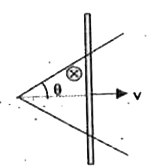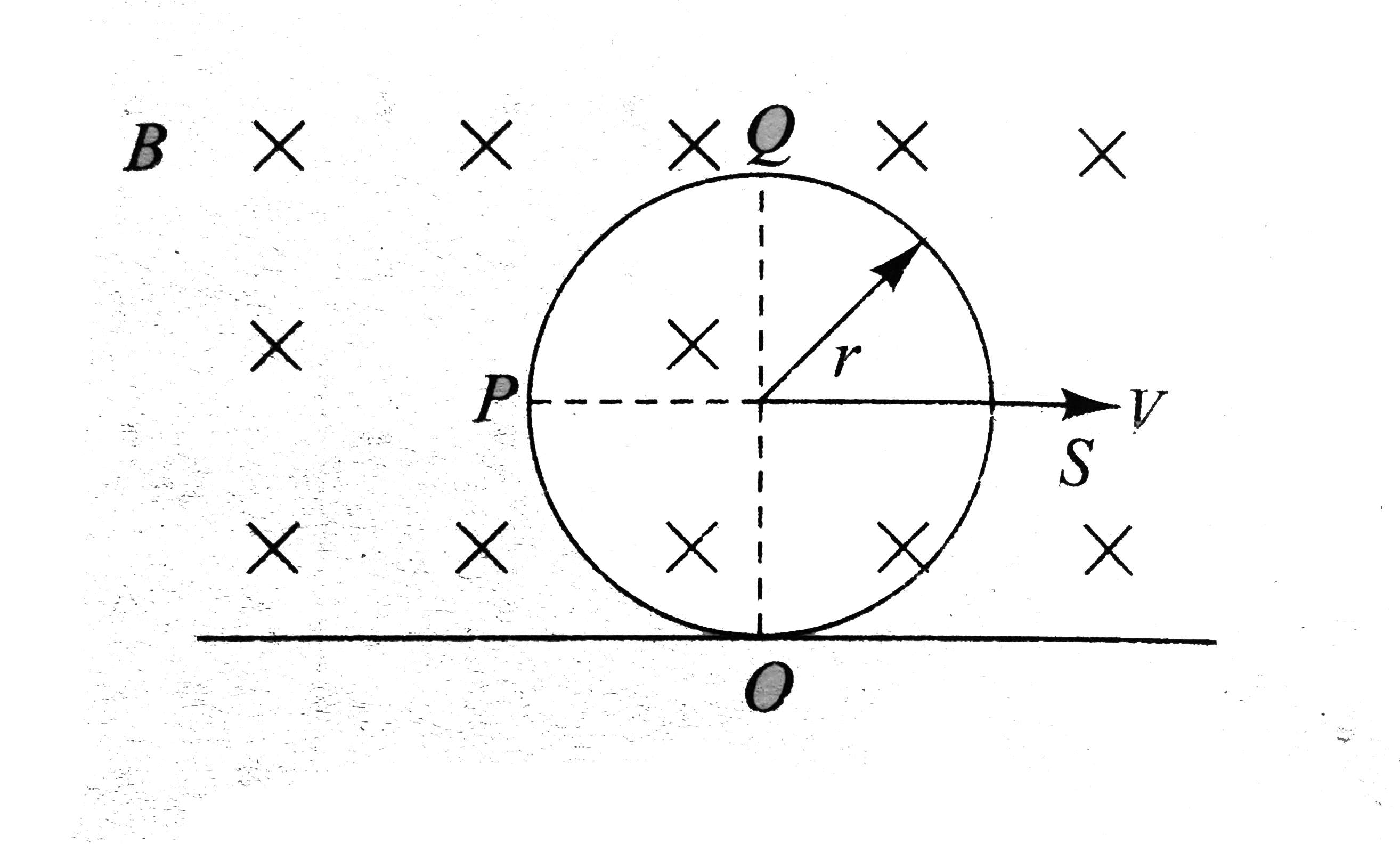A conducting rod, with a resistor of resistance R. is pulled with constant speed v on a smooth conducting rail as shown in figure. A constant magnetic field →B is directed into the page. If the speed of the bar is doubled, by what factor does the rate of heat dissipation across the resistance R change?

0
√2
2
4
The correct Answer is:D
Emf = VBL
I=VBLR
heat =I2R=V2B2L2R
given V1=2V
So H1H=4
Topper's Solved these Questions
Similar Questions
A conducting bar of sufficient length is pulled with a constant velocity in a conducting shaped rail as shown in the figure . Inward magnetic field of induction B is present inside the area bounded by the bar & the rail. Find the external power delivered in moving the rail with constant velocity v at time t ( A= area of cross section of the bar ρ= resistivity of the bar )

View SolutionA conducting rod of resistance r moves uniformly with a constant speed v in a uniform magnetic field. If the rod keeps moving uniformly, then the amount of force required is

View Solution
Knowledge Check
A conducting bar is pulled with a constant speed v on a smooth conducting rail. The region has a steady magnetic field of induction B as shown in the figure. If the speed of the bar is doubled then the rate of heat dissipation will
 Aremain constantBbecome quarter of the initial valueCbecome four foldDget doubled
Aremain constantBbecome quarter of the initial valueCbecome four foldDget doubledTwo straight conducting rails form a right angle where their ends are joined. A conducting bar in contact with the rails starts at the vertex at time t = 0 and moves with constant velocity v along them as shown in Fig. A magnetic field →B is directed into the page. the induced emf in the circuit at any time t is proportional to
 At∘BtCvoltage across L is equal to zero.Dv2
At∘BtCvoltage across L is equal to zero.Dv2A conducting ring of radius 'r' is rolling without slipping with a constant angular velocity ω (figure). If the magnetic field strengh is B and is directed into the page the emf induced across PQ is
 ABωr2BBωr22C4Bωr2Dπ2r2Bω8
ABωr2BBωr22C4Bωr2Dπ2r2Bω8
A conducting rod of resistence r moves uniformely with a constant speed v. If the rod keeps moving uniformly, then the amount of force required is -

View SolutionA copper wire ab of length l, resistance r and mass m start sliding at t=0 down a smooth, vertical, thick pair of connected conducting rails as shown in figure. A uniform magnetic field B exists in the space in a direction perpendicular to the plane of the rails which options are correct .

View SolutionA semi circular conducting ring acb of radius R moves with constant speed v in a plane perpendicular to uniform magnetic field B as shown in figure.

Identify the correct statement.
View SolutionA conducting ring of radius r and resistance R rolls on a horizintal surface with constant velocity v. The magnetic field B is uniform and is normal to the plane of the loop. Choose the correct option.

View SolutionA long conducting wire AH is moved over a conducting triangular wire CDE with a constant velocity v in a uniform magnetic field →B directed into the plane of the paper. Resistance per unit length of each wire is ρ. Then

View Solution
